With the news that BAE don’t intend to assemble the Type 31e Frigate on the Clyde, we ask why things have changed.
The Clyde is working on 5 Offshore Patrol Vessels and is planning to build 8 Type 26 Frigates, compared to an original plan to build 13 Type 26 Frigates at the yards in Glasgow.
As we reported, BAE Systems has announced a partnership with Cammell Laird, who would ‘Prime, build and assemble’ the vessels at their Merseyside facility while the Clyde will focus on the Type 26 Frigates.
If the bid is successful, Cammell Laird would be main contractor with BAE providing design and combat systems.
BAE themselves say that shipbuilding capacity on the Clyde will be full until the mid 2030s while the Ministry of Defence want the first of the new Type 31 Frigates in service by 2023.
BAE say the move will allow them to ‘appropriately support the National Shipbuilding Strategy’ whilst ensuring the delivery of the five Offshore Patrol Vessels and the first three City class Type 26 frigates currently on contract, ‘to time, budget and to the highest quality standards.’
Shipbuilders union GMB earlier accused the Government of reneging on guarantees to build the Type 31 Frigates on the Clyde. While the Clyde will still be working on 13 vessels, 5 of them are Offshore Patrol vessels and 8 are Type 26 Frigates.
Mr Cook of the union GMB told the BBC’s Good Morning Scotland programme earlier in the year:
“These five frigates which Fallon is talking about today were promised to the Clyde as part of the massive cuts. In return, we would have had a state-of-the-art frigate factory to be able to produce the ships at the price that the MoD wished to pay, and we could attract foreign orders.”
Cook also said that there was “no frigate factory, and now no five ships” and that “there has definitely been a reneging – there has been a betrayal on the 13 frigates on the Upper Clyde”.
“Let’s be clear that the Type 31 contracts were originally promised to the Upper Clyde, so while shipbuilding communities across the UK would benefit from a work-share programme of the Type 31 work, this will be at the expense of the Upper Clyde despite its own future already being secured until the 2030s.”
We spoke to a source intimately involved with shipbuilding in Glasgow regarding the practicality of building the Type 31 on the Clyde and he told us:
“I think it’s the obvious answer from an industrial point of view but the question is capacity.
There isn’t any at Govan while T26 is in build.”
Sir Michael Fallon said the first of the new ships are due to be in service by 2023 and shipyards would be encouraged to ensure the vessel was competitive on the global market by working with “global partners”. He said:
“This new approach will lead to more cutting-edge ships for the growing Royal Navy that will be designed to maximise exports and be attractive to navies around the world.”
Nia Griffith MP, Labour’s Shadow Defence Secretary, responding to the publication of the National Shipbuilding Strategy, said:
“I welcome the publication of the National Shipbuilding Strategy and the commitment to the long-term future of our shipbuilding industry. But as well as investing in our naval fleet, we must also invest in the men and women who serve in our Royal Navy.
Despite warnings over many years, our Navy is facing a crisis in recruitment and retention. The Government is on course to miss its own target for the size of the Navy and we simply do not have enough sailors to crew our naval fleet. Experienced personnel are leaving the Navy because of dissatisfaction with pay and conditions. If the Government was serious about properly resourcing our Royal Navy it would lift the public sector pay cap and pay our servicemen and women properly.”
Why has the plan changed?
The MoD is hoping to reduce its reliance on BAE and cut the costs of procurement by spreading shipbuilding across civil and naval yards.
To this end, the government are implementing the results of an independent report into the National Shipbuilding Strategy by Sir John Parker which recommended that the Type 31 Frigate build be spread across the UK, with blocks and components being constructed in yards in both Scotland and England.
The National Shipbuilding Strategy is intended to be a “radical, fundamental re-appraisal of how we undertake the shipbuilding enterprise in the UK, intending to place UK naval shipbuilding on a sustainable long term footing”.
BAE themselves signalled their own reluctance to bid for the Type 31 Frigate as prime contractor due to concerns of a “race to the bottom” on price.
Speaking to The Herald here, BAE managing director Iain Stevenson said:
“We do want to be involved in Type 31. But we have questions. Does it have a budget? What are the timescales. We have not got solid facts. Type 31 could be a race to the bottom.
If it is a front price contract people might bid for it to win and it and it might put them out of business. We would not, because we are BAE Systems.”
In a press release BAE say:
“In response to the Ministry of Defence’s (MOD) evolving requirements as outlined in the National Shipbuilding Strategy, BAE Systems will bring together its warship design and engineering capability and combat systems expertise with Cammell Laird, the commercial shipbuilder, in a Teaming Agreement to bid for the manufacture of the Type 31e, an adaptable general purpose frigate.
BAE Systems is focused on the manufacture and delivery of the two QE Class carriers, the five River Class Offshore Patrol Vessels (OPV) and the first three City class Type 26 warships, as well as continuing to develop and upgrade combat management systems on all Royal Navy ships. Taking account our current and future workload, including Type 26, our shipbuilding capacity on the Clyde will be full until the mid 2030s.”
What does the order book on the Clyde look like?
BAE Systems was recently awarded a contract by the Ministry of Defence worth £3.7bn to manufacture the first three of the eight Type 26 Frigate fleet.
Eight Type 26 Frigates are to be built in total, the contract for the second batch will be negotiated in the early 2020s. Ordering in batches is common for projects of this size around the world and was last seen with the Royal Navy for the Type 45 Destroyers and recent Offshore Patrol Vessels. The Type 45s first batch order was for three vessels for example.
This work will begin after the five Offshore Patrol Vessel order is finished and will last until the mid 2030’s.
Conclusion
Sir John’s aforementioned independent report to inform the recent National Shipbuilding Strategy recommended:
“There is no precedent for building two ‘first of class’ RN frigates in one location in the UK. Type 26 is a critical project for the RN and the Nation. Type 31e is urgently required to maintain RN frigate fleet numbers and to establish a UK exportable light frigate. Against this background risks need to be assessed and evaluated in a responsible way by all stakeholders.
A separate lead shipyard or alliance appears to be the best way forward for Type 31e to minimise overall risk. Regardless of choice, BAES would remain in a position to compete for Type 31e work on combat systems, design support and in block build if capacity is available.”
This recommendation has been met.
In summary, BAE have decided not to bid as prime contractor for the Type 31 and instead have decided to partner with Cammell Laird for reasons outlined above.
The defence giant had already signalled their reluctance to build the vessel and it’s now clear that building them on the Clyde isn’t feasible if they’re to enter service when required, there’s no capacity.
While this has reduced opportunities for the Clyde to build more frigates after the Type 26 production run in 2035, it is good news for UK shipbuilding in general if it goes ahead.




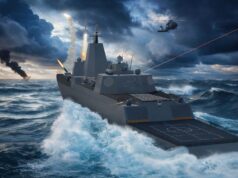
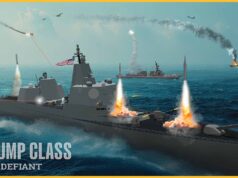
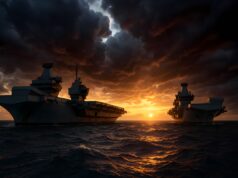


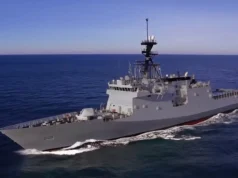
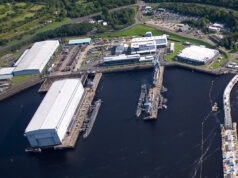

Selfish trades unions! If there’s no capacity at Govan, you can’t ask for the Type 31s unless you feel jobs in Scottish yards are more important than providing the RN with the ships it needs on time.
It’s true that Fallon stated that Scotland would be in “pole position” for the (5) Type 31 frigates (to supplement eight T26s and three opvs). Being in pole position does not guarantee you the race, though. Unfortunately, we need the T31s faster than Scottish yards can build them.
Safe to say that this decision would not have been made if the SNP wasn’t making such a mess of governing Scotland thereby allowing other parties to make gains against them in the polls.
Question: Why do you keep repeating yourselves? Several of your recent posts have all been on the same subject and have cut & pasted the same quotes. Surely a case of less is more?
True. It is most likely why they are making so much of an effort to spin the betrayal of Scottish yards story, to turn people against the UK.
Perhaps you would care to enlighten us as to how the SNP are making such a mess of governing in Scotland. I keep hearing this, usually from those with an axe to grind who have not bothered to educate themselves. The Scottish Government are as popular now as at any time in the last 10 years and have stood up to critics with their actions.
The Scots have accepted promises which were made by Westminster and these have now been shown to be a pack of lies. The 2014 referendum was won on promises such as the shipbuilding contracts and so far, every one of these has been broken.
The best thing the Scots can do now is to vote for Independence instead of being pushed around by Westminster politicians and living off crumbs from their table.
I am quite pleased that UK taxpayer’s hard earned is at last being spent on shipbuilding across the UK as a whole. Not just with one company, at one location, on one river, in one Region that is smaller than larger County Councils elsewhere whose own Chief Executives do not feel the need to act above their pay grade
Absolutely right if they are committed to the Clyde it pretty much means that the RN are committed to buying its ships from Scotland well into the 20s maybe 30s no matter what status exists around Scottish independence. Now they have enough work for 15 plus years while other places in the UK are enabled to do naval work should the nation be split in two. It would be anathema longer term to allow a foreign country to build our ships with all the blackmail possibilities that could involve. If we were to do that it would be far better to get them much cheaper and quicker from far eastern or even European yards. I was always shocked when so much was being ‘promised’ to Scottish yards while capacity elsewhere in skills and capability would be almost eliminated over the course of those contracts.
Makes sense to build and assemble ships in more than one location in the UK.
Whoa! Let’s think positive here. The Clyde has work through to the mid 30’s even without Type 26 exports. The odds are Type 26 will morph into Type 45 successor on the Clyde. Cammell Laird will get at least 5, eventually probably 10 RN Type 31 plus exports and could sub modules to A&P. BAe can sell Type 26 and ‘Leander’. Babcock have lots of refit work, their own Irish opv design and Arrowhead and a shot at the USCG cutter. I’m thinking happy thoughts…
The USCG work is solely DESIGN work and payment for license production/partnership with a US yard same as the FFG(X) competition. American law forbids either the Navy or Coast Guard are forbidden from having ships, even transports much less combatants built overseas.
That the MOD has a plan is amazing news that it has changed is no surprise.
Personally they have played a blinder for a change. This is under the circumstances the very best compromise they could have come up with and allows all options to be left open while still committing to a Scotland within the UK whatever the Scottish unions say. After all it was the unions that pretty much destroyed the ability of British yards to compete in the civil sector 40/50 years ago.
If you read the press in England or get your news from the BBC, SKY etc, you’ll believe that the SNP are making a mess of things up here. They’re not – and that’s why they’re still miles ahead of Labour (with the Tories in third in recent polls). That’s remarkable after a decade in government but then most Scots have stopped reading the lies in the Express, Mail, Telegraph, etc.
Google ‘SNP’s achievements in government’ and you’ll start to understand why they’re still in charge here. Or just continue to spew up the lies of the mainstream media like gullible Bloke down the pub.
NAO recently reported “The first Type 26 is expected to enter service in 2027”
No wonder there is no frigate factory, why would BAE invest when MOD will only drip feed funding due to their budget overspends. The subsequent ten year build cycle reflected in ~£1+ billion cost per ship to pay for ten year shipyard overheads.
Being a Cynic…..it could be payback time for Sturgeon and her stance on Brexit and Independent Scotland…… :¬))
HOWEVER… I agree with spyinthesky above.
Does anyone realistically expect all of these ships to built? If corbyn gets in to power which is ever an increasingly probability the armed forces will be gutted like never before. I’m doubtful we will even get 6 t26 let alone t31, face it until we are actually attacked and humiliated will any politician have the balls to fund our forces properly by which point it will be to late. At least Putin or xi actually put their money where their big fat communist gobs are
This issue is NOT about the Scottish shipyards or whether they have been betrayed or not. They have not been betrayed, FFS, they are getting the lions share of all naval work for the foreseeable future.
The government are simply responding to the NSS, which recommends modular construction, around many yards within the uk, final assembly should be somewhere other than the Clyde otherwise how is that a National shipbuilding plan?
SNP and Scottish unions are full of BS, the sooner the people of Scotland wake upto this fact the better.
What is more important is that the RN gets into service the first 5 type 31es before 2024-2025 then a subsequent batch of a further 5 before 2030. Otherwise escort warship numbers will be dropping off, with type 23s retiring, below their already pitifully low and perilously dangerous current levels.
I think the Clyde can just relax, they have guaranteed work until 2030s and it is likely they will get type 45 replacement and hopefully a replacement, ideally 2 vessels, for Ocean.
No. it should read: ‘BAE has decided not to build the type 31’. or BAE does not want to build any ship if it can help it. BAE does not want the hassle of shipbuilding, it is not in their DNA and they will do anything to get the expensive bits including sacrificing their own yards. if this option is chosen, it does not mean BAE are building on the Mersey, but Cammel laird is building on the Mersey. Apter would be: Cammell Laird has decided not to build on the Clyde, as it has Inchgreen dry dock on its website, and this facility has been eyed for future shipbuilding including non-military.
Even if 10 type 31s were built for the RN and export, it still does not amount to the three RFA Solid Support Ships in terms of meaningful shipbuilding. Those ships will be 40,000 tons full load or around 20-25,000 ton unloaded, compared to a type 31 at 4,500 full load and 3,500 light? 10 full load type 31s would only be around half of the 3 solid support ships unloaded tonnage.
Those ships are said to cost around 1 billion for 3 ships. Do we expect for them to be value for the taxpayer and built abroad to cost around 600 million total, or if if built for 1 billion pounds abroad, they are still value for the taxpayer if they cost 1.4 billion pounds? People on salaries of 25 to 35 thousand pounds, overall pay around 35% tax, so I have been told, that is not including tax on petrol they buy, food they buy, energy, water rates, council tax, clothes tax, tax on everything…. How much does a shipyard pay. From what I gather after operating profits its around 20-25% tax, and that not including materials purchased and services etc…
All I am saying that taxpayer-funded ship needs to have all this calculated in to see if it every value for the taxpayer to have any ship built abroad. With regard to steel, should not the UK government buy directly from a UK steelmaker? Would they not make a saving with all of this revenue clawback for the exchequer and the UK, for the good of the UK, with new investment in people present and new people, and new modern facilities, instead of the lack of vision catch 22 downward spiral.
We have had so many so-called competitions, yet it yields even less, is late and is it up to standard, let alone supposedly being value for the taxpayer (which just hides a UK industry killing rule)?
The real UK National Shipbuilding Strategy is all to do with the Fleet Solid Support Ships, not these 5 type 31s. The Solids will really have the bigger impact on the future of UK shipbuilding succeeding.
As for how many ships are the Clydeside shipbuilder expecting to build, I say this.
Apart from the OPV’s, it will be 8 fully assembled type 26 frigates, with maybe subcontracted out sections (rings, full blocks, bow, stern, mid-body) of the type 31s, the same with the RFA Fleet Solid Support Ships. Or all 3 or 1 and 3 fully assembled Fleet Solid Support Ships, if Babcock at Rosyth does not want to form or be part of a similar set up as seen with the carriers, or just builds number 2, if not built at A&P Tyneside, Barrow (BAE would kill that idea), or Cammell Laird (use of Birkenhead and Inchgreen), or Harland and Wolff. We have so many options, just great built plan and strategy are needed. The skills and business plan are also important to firms involved.
[…] I explained why BAE aren’t looking to assemble the Type 31e here. […]